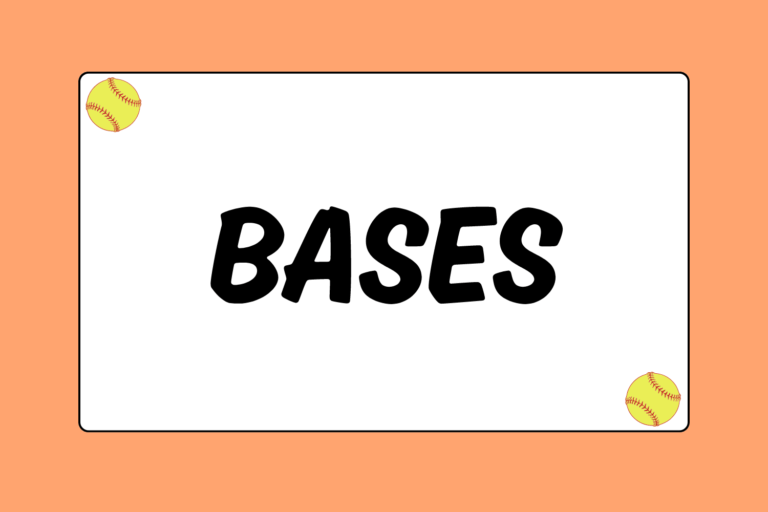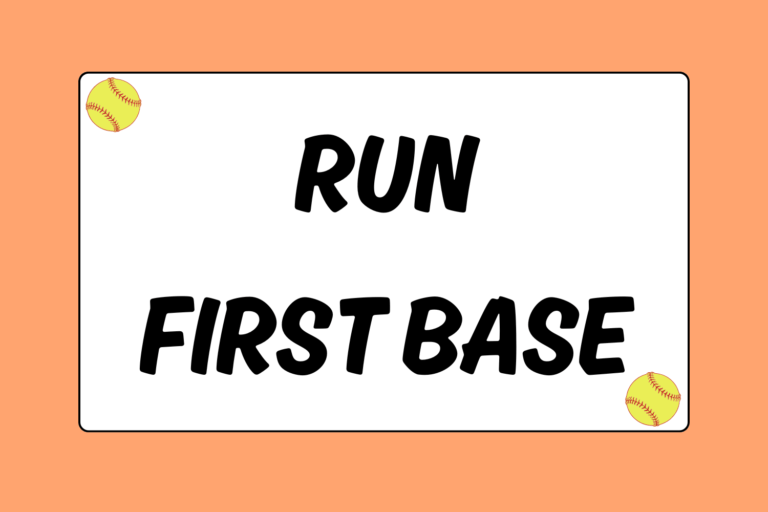A push bunt, if executed properly, will make the corners regret crashing on you. The goal of a push bunt is to entice the corners to crash by giving them the allusion that you are only going to bunt, nothing special. But at the last moment, you’ll push the bunt forward, the ball will propel right past them, and you’ll safely get to first base. This guide will show you the hottest tips on executing a push bunt.
Note: Basic bunting techniques are grounded in softball’s most standard bunt — the sacrifice bunt. If you need a refresher course on proper bunting technique, check out our guide, How to Sacrifice Bunt.
The Push Bunt
The difference between a regular sacrifice bunt and a push bunt is your arms. In a sacrifice bunt, you absorb the ball while attempting to make the bunt as soft as possible. With a push bunt, though, it is quite the opposite.
When the ball is making contact with your bat, rather than inching your elbows in towards your body, you push them outwards. A push bunt is the only circumstance where this is the case.
As the ball is making contact with your bat, push your arms away from your body. This will push your bunt forward, past the crashing first and third basemen. To ensure that you do not pop-up, make sure your bat is still at an angle, roughly 45 degrees from your eye-level to your hands.
Placement
There are two ideal spots to place a push bunt. The first spot is between the first baseman and the pitcher, and past the crashing first baseman. You don’t ever want to push your bunt to the first baseman or pitcher — this will result in an easy out.
A successful push bunt requires excellent bat control because you need to angle the ball between the fielders. The goal is to push the ball past the crashing corners (making them regret thinking they could handle you!).
The second spot is between the third baseman and the pitcher, and past the crashing third baseman. Again, you want to avoid pushing your bunt to the third baseman or pitcher.
With a sacrifice bunt, you might strategically place a bunt towards a slow-moving pitcher. But whether she is fast or not, you do not want to push a bunt to a pitcher — that’s just asking for an easy out!
And remember, in order to accurately (and successfully) place your bunt, you need proper bat angle. Inching your bottom hand in towards your body will angle your bat towards the third base side. Inching your bottom hand out and away from your body will angle your bat towards the first base side. Your bottom hand moves only slightly — a movement too big will likely push your bunt foul.
Hot Tip: Scan Your Infield
All good bunters in softball take a common skill up to bat with them — the ability to read the infield, especially the corners. Even though a coach will generally give you a sign on which bunt to use, you need to know where to place the bunt.
The first thing to look at is the corners’ leg speed. Are the fast or are they slow? Do they sit on their heels, or are they crashing hard? You’ll face any of these situations in every game, so you need to know what to do. Push your bunt past a crashing infielder and drop a soft bunt in front of a player sitting back on her heels.
You should also notice the corner infielders’ throws. Are they accurate? Are they strong? When you are on the on-deck circle, pay attention to these two things — they’ll give you a sure advantage in the box. Rather, bunt towards whichever corner has a less accurate or weaker throw.
Push It!
A push bunt is a great tool to boost the morale of your team. You can push bunt while you are sacrificing or when you are bunting for a base hit. Read your infield and make the best choice you can. Whether you find yourself in a situation where you need to advance a runner, or where you need to get yourself on base, a push bunt is always a good option to have. Push yourself to get better, and you’ll become a great push bunter!





